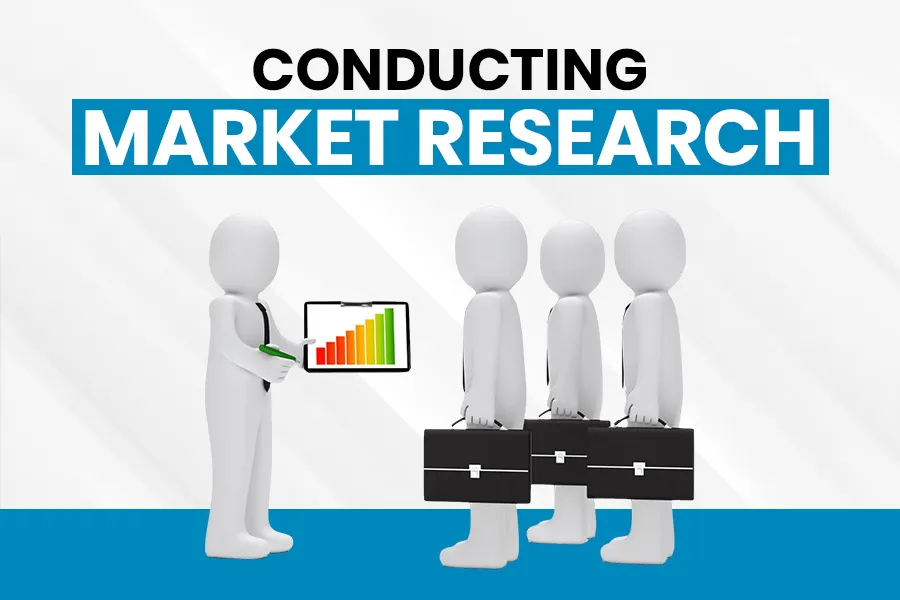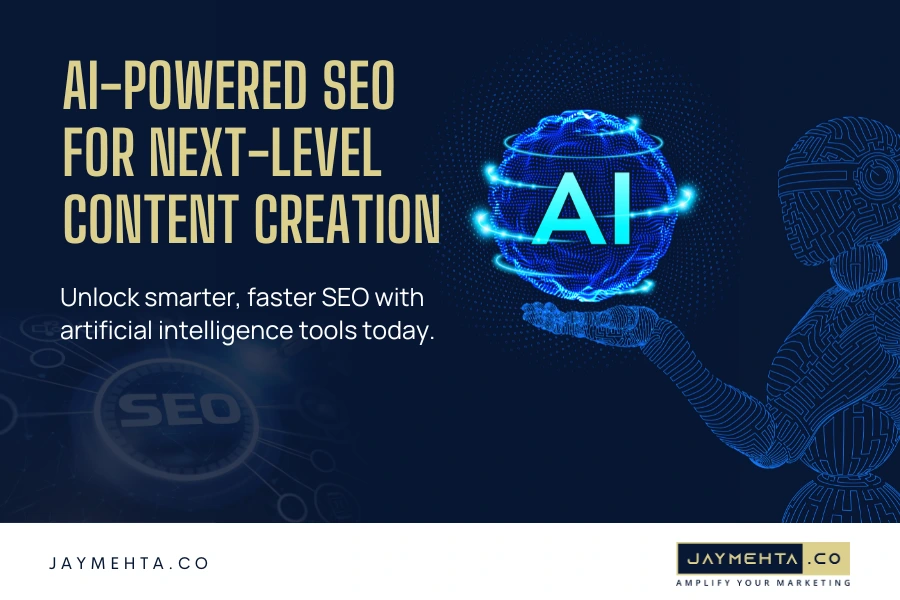Introduction
You have a mind-blowing business idea for your desired product or service. You can believe it can solve a problem, fulfill a need, or satisfy a desire for many individuals. You are ready to share your MOTIVE with the world and try to generate sales.
But wait. Who are you going to share it with? Who are your ideal customer base? How do you find them and convince them to make a purchase from you? You might be convinced to say that everyone is your customer. After all, why limit yourself to a small group of people when you can reach millions or billions of potential clientele? Well, this is a prescript for a setback.
Trying to promote your business with awe-inspiring products or services to everyone is like trying to catch all the fish in the ocean with one net, and you'll end up catching nothing. That's why you need to narrow down your target audience.
In this article, we will dive deep into the ocean of target marketing. You will learn how to use different online marketing techniques and tools to identify and narrow down your target audience.
Additionally, we'll also look at some tips-n-tricks and best practices for optimizing your marketing campaigns to effectively communicate with and successfully reach your specific audience.
Let's get started!
What is Your Targeted Audience?
Your targeted audience refers to a group of individuals who shares similar characteristics, needs, problems, interest, and behaviors that make them most likely to purchase your products or services.
Your target audience is not the same as your market. Your market is the broader category of people who could potentially use your product or service but may not be interested in or aware of it. Your target audience is a subset of your market that you want to focus on and communicate with.
narrowing down your target audience, you can
- Focus your marketing efforts and resources on the most relevant and profitable segments of your market.
- Create more personalized and engaging content that resonates with your audience and builds trust and loyalty.
- Differentiate yourself from your competitors and position yourself as an expert and a solution provider in your niche.
- Increase your conversion rates and customer retention rates as you deliver more value and satisfaction to your audience.
Related Blog: How to Create a Content Marketing Strategy
Let us consider an example. If your niche is selling healthy herbal tea and coffee products, your potential market could include anyone who values their health and well-being. However, your precise target audience would be individuals between the ages of 25 and 75 who are interested in beverages and health conscious.
But how do you narrow down your target audience? What marketing methods and tools can you use? How do you communicate effectively with your narrowed-down audience and optimize your marketing campaigns for them?
Benefits of Narrowing Down Your Target Audience

By narrowing down your target audience, you can reap several benefits for your business:
Focused Marketing Efforts
By identifying and narrowing down your target audience, you can concentrate your online marketing efforts and resources on the most relevant and profitable segments of your market. This approach allows you to allocate your budget effectively and tailor your brand voice to resonate with your audience's specific needs and preferences.
Personalized and Engaging Content
When you have a well-defined target audience, you can create more personalized and engaging content that truly resonates with them. By understanding their characteristics, interests, and pain points, you can craft messages that speak directly to their needs, building trust and loyalty in the process.
Differentiation and Expertise
Narrowing down your target audience helps you differentiate yourself from competitors. By focusing on a specific group and understanding their unique requirements, you can position yourself as an expert and a solution provider in your niche.
This expertise instills confidence in your audience, making them more likely to choose your offerings over competitors.
Increased Conversion and Retention
As you deliver more value and satisfaction to your target audience, you can expect to see increased conversion rates and customer retention. By tailoring your products, services, and marketing campaigns to cater to their specific needs, you enhance their overall experience, making them more inclined to purchase from you repeatedly.
Related Blog: Implementing a cutting-edge Customer Relationship Management (CRM) system
Now let’s explore some techniques …
How Can I Best Reach My Targeted Audience?
Basics of Target Audience Identification
To reach your target audience, you must first define your target audience. And for this, you need to understand your customers.
You can do this by building a consumer persona. A customer or buyer persona is a generalized representation of how your ideal buyers would be like. You list their demographic and psychographic attributes and preferences to gain a better understanding of your target audience.
Then you can market your brand and products only to those who are most likely to be genuinely interested in them. This means that there will be a higher chance of getting leads and conversions. This will help you increase revenue by investing less.
Defining a Target Audience
A target audience refers to a specific group of individuals or customers that a business aims to reach with its premium products, services, or marketing efforts. This group is identified based on various characteristics such as demographics, psychographics, interests, and behaviors.
However, understanding the target audience is crucial for business success as it allows companies to tailor their offerings and marketing strategies to meet the needs and preferences of their most valuable customers.
Broad Audience vs. Specific Target Audience
Differentiating between a broad audience and a specific target audience is essential in effective marketing. A broad audience refers to a large and diverse group that includes individuals with varying characteristics and interests.
However, a specific target audience narrows down the focus to a smaller, more defined group of individuals who are more likely to be interested in what the business has to offer.
By targeting a specific audience, businesses can optimize their marketing efforts and allocate resources more effectively, resulting in better engagement and higher conversion rates.
Buyer Personas
Buyer personas are fictional representations of ideal customers that businesses create based on research and data. These personas are developed by analyzing demographic information, psychographics, motivations, goals, and pain points of potential customers.
Buyer personas help businesses gain a deeper understanding of their target audience by humanizing them and providing insights into their behaviors, preferences, and decision-making processes.
By creating accurate and detailed buyer personas, businesses can align their marketing strategies with the needs and desires of their target audience, ultimately improving their chances of success.
-
Conducting Market Research

Significance of Market Research
Indeed, market research plays a pivotal role in narrowing down the target audience. It involves gathering and analyzing data about the market, customers, competitors, and industry trends.
By conducting market research, businesses gain valuable insights into their target audience's preferences, needs, and pain points, enabling them to refine their offerings and marketing strategies accordingly.
Market research helps in identifying market trends, understanding customer behavior, evaluating competitors, and making informed business decisions.
Read also: Essential Digital Marketing Tips For Small Businesses
Methods of Market Research
Several methods can be employed to conduct market research. Surveys are a popular approach that involves gathering information directly from the target audience through questionnaires or online forms.
Focus groups bring together a small group of individuals to engage in discussions and provide feedback on specific products or services. Data analysis involves collecting and analyzing existing data, such as customer purchase history, website analytics, and social media insights.
Other methods include interviews, observations, and competitor analysis. Combining multiple research methods can provide a comprehensive understanding of the target audience.
Tips and Resources for Effective Market Research
To conduct effective market research, it is important to define research objectives and questions clearly. This helps in focusing the research efforts and obtaining relevant and actionable insights.
Utilizing online survey tools and market research platforms can streamline the data collection process. Additionally, leveraging social media listening tools and analytics platforms can provide real-time insights into customer sentiment and behavior.
Collaborating with market research professionals or agencies can also be beneficial for businesses that require specialized expertise or resources.
-
Analyzing Demographics and Psychographics

Importance of Demographics
Demographics are quantitative characteristics of a population segment, including age, gender, location, income, and education level. Analyzing demographics helps businesses identify key segments within the larger target audience.
Understanding demographics allows businesses to tailor their marketing messages, product features, and distribution channels to better resonate with specific age groups, genders, or geographical regions.
For example, a business targeting young adults may use different marketing channels and language compared to one targeting senior citizens.
Role of Psychographics
Psychographics refers to qualitative characteristics that define the attitudes, interests, values, lifestyles, and behaviors of individuals. Psychographic segmentation provides deeper insights into the motivations and preferences of the target audience beyond demographics alone.
By analyzing psychographics, businesses can identify shared interests, values, and behaviors among their target audience, enabling them to create more personalized marketing campaigns.
For instance, a fitness apparel company may focus on individuals who value health and wellness and incorporate these values into their branding and messaging.
Examples and Case Studies
Analyzing demographics and psychographics can be illustrated through examples and case studies. For instance, a skincare brand may identify its target audience as women aged 25-35 residing in urban areas with an interest in natural and organic products.
By understanding the demographics and psychographics of this audience, the brand can create marketing campaigns that highlight the product's benefits, emphasize eco-friendly packaging, and use social media platforms popular among this specific group.
Such targeted campaigns are more likely to generate engagement and conversions compared to generic messaging aimed at a broader audience.
-
Evaluating Competitors and Niche Markets

Significance of Competitor Analysis
Competitor analysis is a crucial step in identifying a unique target audience. By studying competitors, businesses can gain insights into their strategies, target audience, product offerings, and marketing tactics.
This analysis helps identify gaps in the market that competitors might have overlooked or underserved. Understanding the competition allows businesses to differentiate themselves and tailor their offerings to meet the needs of a specific segment of the market, positioning themselves as a better alternative.
Revealing Untapped Niche Markets:
Researching competitors often leads to the discovery of untapped niche markets. These are specific segments of the target audience that have unique needs or preferences not adequately addressed by existing competitors.
By identifying and targeting niche markets, businesses can differentiate themselves and create a competitive advantage. For example, a food delivery service may identify a niche market of health-conscious individuals who require gluten-free, vegan options and create a specialized menu catering to this audience.
Strategies and Tools for Competitor Analysis
To evaluate competitors effectively, businesses can employ various strategies and tools. These include conducting a SWOT (Strengths, Weaknesses, Opportunities, Threats) analysis of competitors, analyzing their marketing campaigns, examining customer reviews and feedback, and monitoring their online presence and social media engagement.
Tools such as competitor tracking software, industry reports, and market research databases can provide valuable data and insights to support the analysis. By leveraging these strategies and tools, businesses can gain a competitive edge by understanding their competitors' strengths and weaknesses.
-
Refining Your Target Audience
-
Importance of Continuous Refinement
Target audience identification is an ongoing process that requires continuous refinement and adaptation. As markets evolve, customer preferences change and new trends emerge, businesses need to stay up-to-date and refine their understanding of their target audience.
Regularly revisiting and reassessing the target audience allows businesses to ensure that their marketing efforts remain relevant and effective. By staying connected with their audience and adapting to their changing needs, businesses can maintain a competitive edge and foster long-term customer loyalty.
Read also: Top Digital Marketing Trends for 2023 by Jay Mehta
Testing and Measuring Campaign Effectiveness
To refine the target audience effectively, it is crucial to test and measure the effectiveness of marketing campaigns. By setting clear objectives and tracking key performance indicators (KPIs), businesses can evaluate the impact of their marketing efforts.
A/B testing, where different variations of a campaign are tested with separate audience segments, can provide insights into what resonates best with the target audience.
Additionally, analyzing customer feedback, engagement metrics, conversion rates, and sales data helps businesses understand how well they are reaching and engaging their target audience.
Practical Tips for Refining Target Audience
Refining the target audience requires a data-driven approach and a willingness to adapt. By gathering feedback from customers through surveys, interviews, or social media interactions, businesses can gain valuable insights into their preferences, needs, and pain points.
Analyzing website analytics, social media metrics, and sales data can also provide actionable information. Businesses should also monitor industry trends, competitor strategies, and emerging technologies to stay ahead of changes in the market.
Based on these insights, businesses can refine their target audience profile, adapt their marketing strategies, and tailor their offerings to meet customer demands better.
-
-
Creating Effective Marketing Strategies

Narrowing Down for Effective Marketing Strategies
Narrowing down the target audience enables businesses to create more effective marketing strategies. By focusing on a specific audience segment, businesses can develop highly targeted messages that resonate with their audience's needs, values, and interests.
This personalization leads to improved engagement, higher conversion rates, and better return on investment (ROI) for marketing campaigns. Rather than adopting a one-size-fits-all approach, businesses can tailor their marketing efforts to speak directly to their target audience, resulting in more impactful and successful campaigns.
Segmentation for Tailored Marketing Messages
Segmentation is the process of dividing the target audience into distinct groups based on shared characteristics or behaviors. By segmenting the target audience, your businesses can create a tailored brand voice that speaks directly to the unique needs and preferences of each segment.
Let us take the example of car manufacturers, who may create different campaigns for young professionals, families, and sports car enthusiasts, highlighting features and benefits that are most relevant to each group.
This segmentation allows businesses to deliver personalized brand messages and establish a strong connection with their target audiences.
Examples of Successful Marketing Campaigns
It's undeniable that targeting a specific audience can be a powerful strategy for marketing campaigns. For instance, Nike's "Just Do It" campaign targeted athletes and individuals seeking inspiration and motivation.
This campaign resonated with the target audience and established Nike as a brand associated with athletic excellence and determination.
Here's another example: Apple's "Get a Mac" advertising campaign that aimed at tech-savvy individuals who favored Macs over PCs. Apple effectively showcased the distinctive features and user interface of Macs, positioning itself as a premium and avant-garde option for this particular audience.
Wrapping Up
Ultimately, the process of identifying and narrowing down your target audience is a vital step toward achieving business growth and success.
By understanding the basics of target audience identification, conducting thorough market research, analyzing demographics and psychographics, evaluating competitors, and continuously refining your approach, you can create more effective marketing strategies that resonate with your customers.
Bear in mind your target audience is not static, and it requires constant optimization and improvement. Start the process of identifying your specific target audience today and embark on a journey of enhanced customer engagement, improved marketing effectiveness, and sustainable business growth.
Frequently Asked Questions
How do I reach my target audience?
What should I consider for my target audience?
When you are determining your target audience and market niche, you need to consider the following 5 criteria:
Age, Gender, Education, Income, and Location
Use all these five to determine who is most likely to buy your products or services, which can aid you in narrowing down your marketing strategies to save time and money.
What are the major target market strategies?
There are several ways to reach your target market, but here are three of our favorites:
Collaborate with a Consultant
Work with a business consultant to effectively reach your target audience. With their specialized knowledge of your market, they can assist you in developing a strategic plan that is both relevant and compelling.
Online Marketing
Many social platforms allow you to narrow down the audience for your ads based on demographic information. This can be very useful in getting your brand message in front of the right eye.
Use Quality Content for Organic SEO
When posting organically to search engines, add relevant visuals, links, and content that are used by your target audience.
Related Blog: Why Does Your Business Need a Digital Marketing Consultant?
How do I reach my ideal customers?
Your business can reach ideal customers through a variety of marketing techniques, including branding, digital marketing, search engine optimization, using display and search ads, email marketing, and more.
Related Blog: How to Create a Brand Strategy Plan
Can you give an example to the target audience?
Many businesses use demographic and psychographic information to narrow down their target audience. An example of a target audience would be women aged 25-45 with a bachelor’s degree in the USA.
The target audience can be as specific or general as you like, and if you don’t yet know who your audience is, look up your specific customers to learn more.











